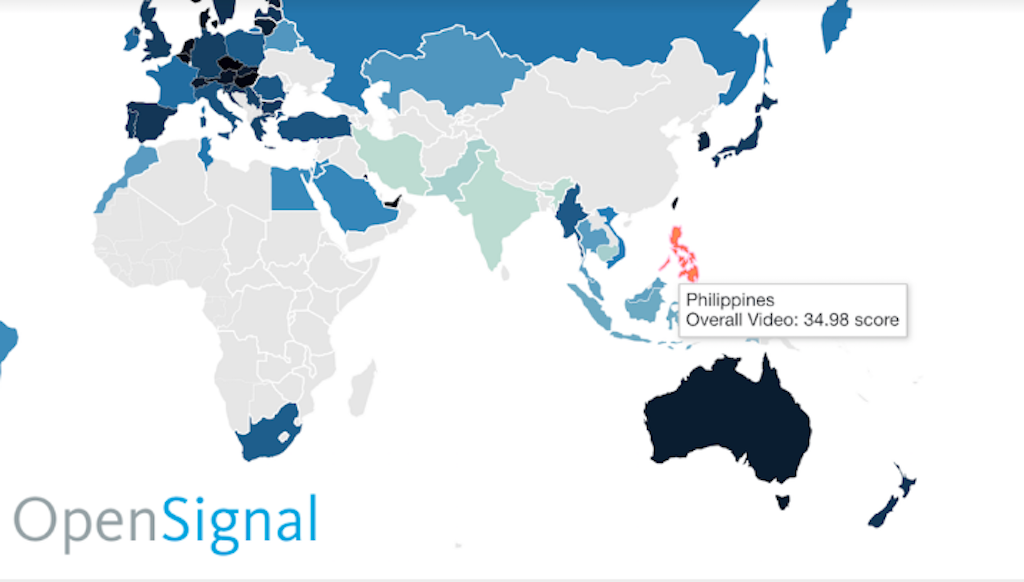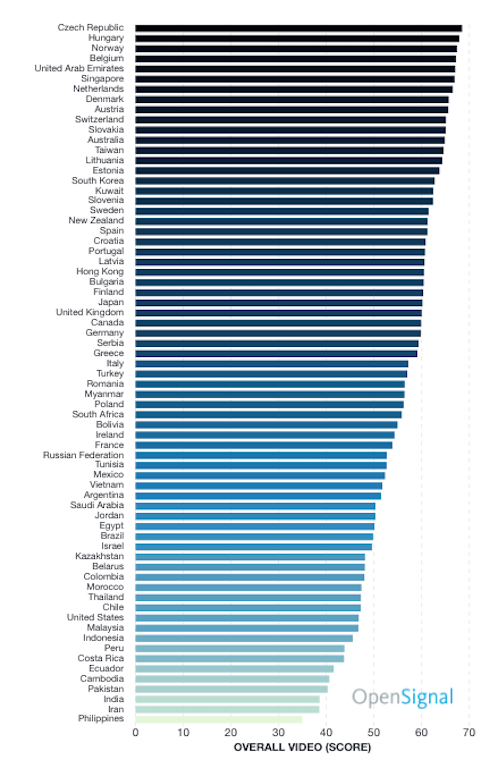TELECOM | PH places last in mobile video experience among 69 countries
Mobile analytics firm OpenSignal releases their “State of Mobile Video” report in September 2018 with an experience-oriented focus: quality of mobile video.

MANILA, PHILIPPINES — Mobile analytics firm OpenSignal releases their “State of Mobile Video” report in September 2018 with an experience-oriented focus: quality of mobile video.
With data points gathered from 8 million test devices, across a period of 3 months, and among 69 countries, the mobile video experience of Filipinos places last with a “Poor” rating. The Czech Republic tops the list with a “Very good” rating. None of the countries were able to reach the best possible rating of “Excellent”.
OpenSignal is a go-to resource for speed, availability, and latency metrics for mobile operators all over the world. With mobile video consumption skyrocketing in the recent years, the firm decided that it is a more holistic measure of the true mobile experience – instead of simply releasing scores on downloads, uploads, and coverage.
“We’re measuring the full end-user viewing experience, from loading and stalling rate through to picture quality, to provide the most accurate view of what it’s like for typical users to watch video on a mobile device,” said Brendan Gill, OpenSignal chief executive, in a press statement.
What is the perfect mobile video experience?
The test was conducted with sample videos in multiple resolutions accessed from multiple content providers. A perfect mobile video experience will have a short load time before a video begins playing, zero stops and stutters in video playback, and excellent picture quality. Based on these three main criteria and the everyday experience of Pinoy mobile users, the ranking comes as no surprise.
Fast does not mean perfect
The average download speed of mobile connections in the Philippines is 6.03 Mbps, faster only than Pakistan and India in the report. Among countries with low download speeds, a slight increase in Mbps results in a sharp improvement of video quality, thus correlating speed with the mobile video experience quality.
The correlation stops, however, at speeds above 15Mbps. While Korea tops the list of speedy downloads at 45.58 Mbps, it is not even in the Top 10 countries with the best mobile video experience. The Czech Republic on the other hand, while it bested all countries in video experience, delivers an average of only 28.76 Mbps in downloads.
If not with speed, how can mobile operators achieve excellent mobile video quality? As with many things, the key is consistency. A sustained download speed of 20 Mbps provides a better experience than speeds that fluctuate from 50 Mbps down to 2 Mbps. In this example, users will encounter stutters in the video playback. Because mobile operators operate based on shared capacity – unlike the dedicated line of broadband subscribers, it is difficult to maintain consistent speeds.
The US was cited as an outlier, based on its relatively fast download speed of 16.53 Mbps and yet a “Fair” rating in video quality. Countries with comparable speeds received a higher quality rating of “Good”. The report attributed this to operator policies that affect video quality. Operators in the US restrict the level of video quality that subscribers can access, in an attempt to protect the continuously exploding traffic due to video content. This affected the scores in terms of video quality. OpenSignal continues to explain, however, that lifting such restrictions may not necessarily improve scores as this means more traffic that may degrade individual speeds experienced by users.
How do we get to “Excellent” mobile video experience?
OpenSignal is looking to 5G, with its gigabit speeds, for answers. 5G’s low latency may cut down video load times, and its high-density network architecture may create the resilient connections needed for seamless video playback.
Locally, both major Philippine mobile operators have teased the public with their promises on 5G. Though with a meager nationwide baseline of 6 Mbps in downloads, how much better can our experience get with this new technology?
Whether we will escape or remain in the bottom 3 is still a question. In the meantime, we take comfort in our leadership in social media usage and in the number of our international beauty queen titles.




